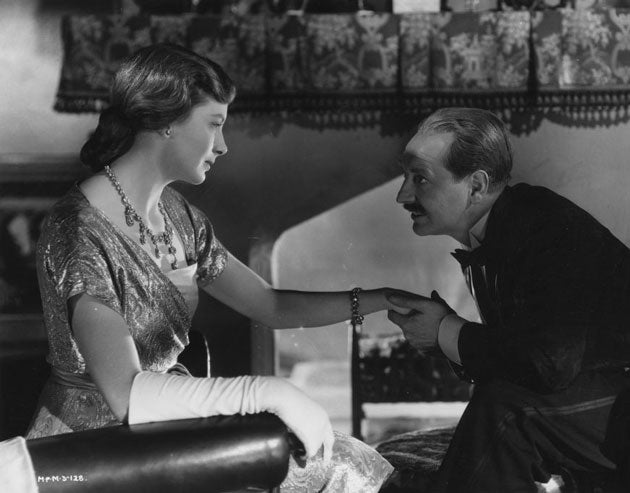Age scene: 'The Life And Death Of Colonel Blimp'
A life spent longing for a woman he will never hold for long

Romance in movies tends to be the preserve of the young and good-looking. If there are seven ages of love, cinema disregards around six of them. Just occasionally, in subversive films such as Carlos Reygadas' Japon (2002) or Hal Ashby's Harold And Maude (1971), filmmakers are bold enough to show relationships between the very old and the very young. As it's often remarked, leading men have a far longer shelf life than their female counterparts (Cary Grant was still the dapper man about town in his late fifties), but age is still a taboo when it comes to screen love stories.
Powell and Pressburger's The Life and Death of Colonel Blimp hardly feels like a romance at all. It was made in the middle of the Second World War. The first time we see Clive Candy (Roger Livesey) he is in the bathouse a fat, pink and pompous figure with a walrus moustache who is furious that the young soldiers have "cheated" in a war game. He seems like a symbol of the British establishment at its most reactionary. That was certainly how the original Colonel Blimp appeared in the David Low newspaper cartoons that partly inspired Powell and Pressburger.
Winston Churchill didn't care for the film at all. The Ministry of Information thought the script was "defeatist" and bad propaganda. Seen today, though, the film appears to be an extraordinarily moving love story. Clive Candy wasn't just the heroic young soldier with the Victoria Cross from the Boer War who had somehow turned into a blustering fogey by the time of the Second World War. He was one of the great romantics of British movies. What adds such resonance to the film is that having lost his one true love as a young man, he spends the rest of his life looking for her. As an old man, he is still as besotted with her as ever but she remains unattainable.
Deborah Kerr (in a role originally intended for Wendy Hiller) plays three different roles in the movie. When we first see her, she is Edith Hunter, the English governess who breaks his young heart by marrying his best friend, the German officer, Theodor Kretschmar-Schuldorff (Anton Walbrook). Next, we see her as Barbara Wynne, the Red Cross nurse he meets and marries during the First World War, but loses to an accident.
Finally, she is Candy's young driver, Angela "Johnny" Canyon, during the Second World War. The casting of Kerr in all three roles was a very bold decision. After all, this was ostensibly a wartime British propaganda picture, not a Last Year at Marienbad-style piece of experimentalism. Her presence gives the film its uncanny quality and its melancholic undertow. She stays young while Candy grows older, but his attitude toward her doesn't change at all with age. She represents his romantic ideal. He knows all along that he will never be able to hold on to her at least, not for long.
There are, though, at least a few fleeting moments of happiness along the way, notably when Livesey and Kerr prepare for their wedding and finally share a kiss.
Subscribe to Independent Premium to bookmark this article
Want to bookmark your favourite articles and stories to read or reference later? Start your Independent Premium subscription today.

Join our commenting forum
Join thought-provoking conversations, follow other Independent readers and see their replies